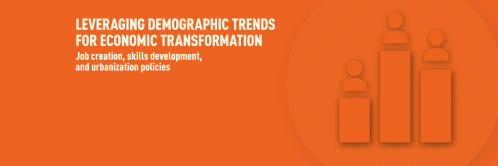In January, the African Development Bank (AfDB) released the African Economic Outlook 2020, its annual publication that reviews Africa’s growth performance. This year’s edition includes a special section on workforce development in Africa. According to AfDB estimates, the region grew at 3.4 percent in 2019 and is expected to grow at 3.9 percent in 2020. Growth in 2019 was about the same as the year before. Africa’s five largest economies (Algeria, Egypt, Morocco, Nigeria, and South Africa) have dragged down region-wide growth as they expanded by 3.1 percent compared to 4 percent for the rest of Africa. East Africa was the fastest-growing region with 5 percent growth.
The effect of government spending on education in Africa is mixed
The report highlights the education and skills needed for the future and how governments can finance investments in education. Currently, African governments spend about 5 percent of GDP on education, which is the second highest of any region. Notably, almost half of all African countries are meeting both of the recommended education financing targets set by the United Nations (Figure 1). The effect of government spending on education in Africa is mixed: Higher absolute spending is positively correlated with average years of schooling but has no relationship with test scores (a proxy for education quality).
Figure 1. While many African countries met at least one of the two education financing targets, only 46 percent met both targets, 2010-2017
Source: African Economic Outlook 2020, African Development Bank.
While African countries are devoting significant resources to education, the region has the worst education spending efficiency. According to the report, Africa has a 58 percent efficiency score for primary education and 41 percent efficiency for secondary education, both more than 20 percentage points lower than the second-worst performing region (Figure 2). According to the report, if public spending efficiency in Africa were at the level of Latin America, the region’s primary school completion rate would rise from 79 percent to 98 percent. Within Africa, Southern Africa has the highest education spending efficiency.
Figure 2. The efficiency of government education spending on primary and secondary education is lowest in Africa, 2010–2018
Source: African Economic Outlook 2020, African Development Bank.
The report provides recommendations on how governments can improve education spending efficiency and mobilize additional resources, as the region currently faces an annual $40 billion gap in education financing. On efficiency, the report recommends strengthening Public Expenditure Tracking Surveys, using performance-based financing to improve outcomes, and raising teacher quality to reduce school repetition. For additional financing, the report highlights the potential of public-private partnerships—such as implementing service contracts for schools and increasing private financing of research—and increasing private sector involvement in vocation-training programs.
The Brookings Institution is committed to quality, independence, and impact.
We are supported by a diverse array of funders. In line with our values and policies, each Brookings publication represents the sole views of its author(s).









Commentary
Figures of the week: Public spending on education in Africa
February 13, 2020